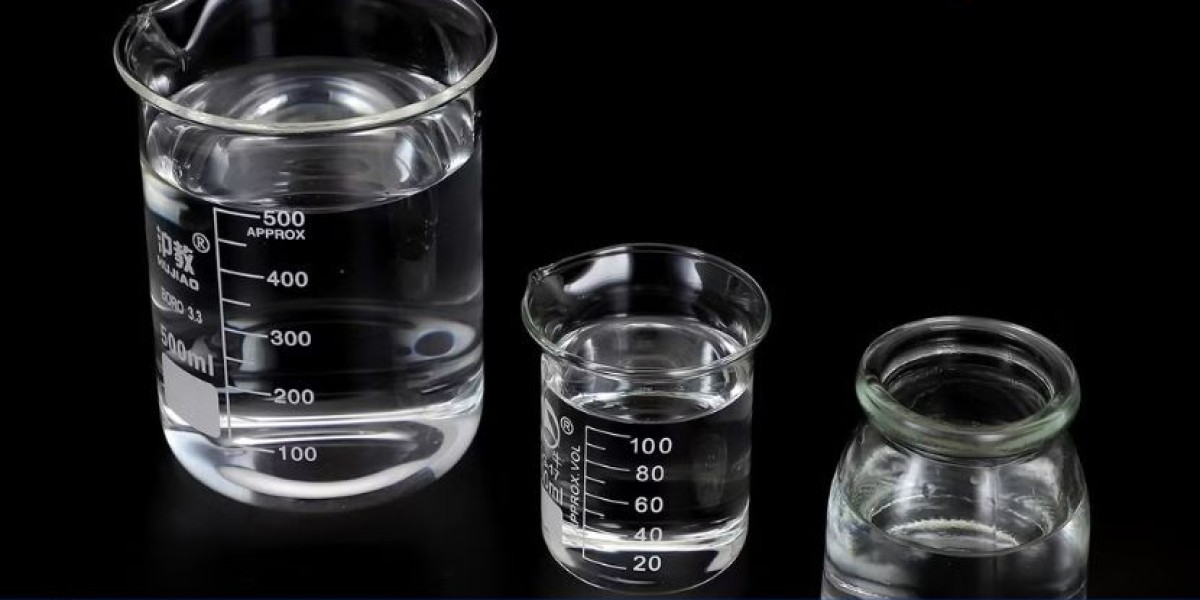Introduction
Isooctanol, also known as 2-ethylhexanol (2-EH), is an important organic compound widely used in the production of plasticizers, solvents, and various chemicals. It is a colourless liquid with a mild odor, and its primary applications include serving as a raw material in the production of esters for plasticizers, fuel additives, and lubricants. With the growing demand for industrial chemicals and the increasing need for flexible and durable materials, establishing an Isooctanol manufacturing plant offers a lucrative business opportunity. This Isooctanol Manufacturing Plant Project Report provides an in-depth analysis of the key factors required for setting up a successful isooctanol manufacturing facility, including market demand, raw materials, production processes, equipment requirements, and safety regulations.
Overview of Isooctanol
Isooctanol (C8H18O) is a branched-chain alcohol commonly used in the production of plasticizers, which are added to plastics to increase their flexibility and durability. It is also used in the manufacturing of synthetic lubricants, fuel additives (such as in octane boosters), and solvents. This compound is primarily produced through the hydroformylation of butenes or by the aldol condensation of acetaldehyde. It is known for its versatile chemical properties, making it a crucial ingredient in several industries.
Market Demand for Isooctanol
Isooctanol is essential in multiple industrial sectors, which include:
- Plastic Industry: Isooctanol is one of the main feedstocks for the production of dioctyl phthalate (DOP), a widely used plasticizer in PVC manufacturing.
- Automotive: Isooctanol is used in fuel additives to increase the octane number of gasoline, improving fuel efficiency and engine performance.
- Cosmetics and Personal Care: As a solvent, it is used in various cosmetic products like perfumes, lotions, and hair products.
- Pharmaceuticals: Isooctanol is used as a solvent and in drug formulations, particularly for products that require a solvent with low toxicity.
The rising demand for PVC-based products, fuel additives, and other applications drives the need for isooctanol, ensuring a steady market demand.
Get a Free Sample Report with Table of Contents@
Raw Materials Required for Isooctanol Manufacturing
The production of isooctanol typically requires the following raw materials:
- Butenes (derived from petroleum or natural gas) – the primary starting material for isooctanol production.
- Hydrogen – used in the hydrogenation process during production.
- Acetaldehyde – used in certain synthetic routes for producing isooctanol.
- Catalysts – specific catalysts are used to facilitate the production processes, particularly in the hydroformylation and condensation reactions.
Production Processes for Isooctanol
There are two main methods for producing isooctanol, both of which involve the use of butenes or acetaldehyde as primary raw materials.
Hydroformylation Method:
- In this process, butenes react with carbon monoxide (CO) and hydrogen (H2) in the presence of a catalyst (typically a rhodium or cobalt-based catalyst) to form 2-ethylhexanal.
- The aldehyde is then hydrogenated to produce 2-ethylhexanol.
Aldol Condensation Method:
- Acetaldehyde undergoes aldol condensation to produce a higher molecular weight compound, which is then hydrogenated to produce isooctanol.
Equipment Requirements
The production of isooctanol requires several pieces of equipment:
- Reactor vessels: To facilitate the chemical reactions involved in hydroformylation or condensation.
- Distillation columns: For separating the produced 2-ethylhexanal from the reaction mixture.
- Hydrogenation reactors: To hydrogenate the intermediate products into isooctanol.
- Heat exchangers: For maintaining optimal temperatures during the reaction and distillation processes.
- Storage tanks: For storing raw materials and final products.
- Filtration systems: For purifying products and removing unwanted by-products.
- Control systems: For monitoring and regulating the manufacturing process to ensure product quality and safety.
Regulatory Compliance and Safety Standards
Setting up a manufacturing plant for isooctanol requires strict adherence to regulatory standards and safety guidelines:
- Environmental Compliance: The plant must comply with emissions regulations, ensuring proper handling of waste products and emissions. The facility should have a waste management system to treat solvents and other chemical by-products.
- Occupational Safety: Proper safety measures, such as protective equipment for workers and emergency response protocols, should be in place due to the flammable and toxic nature of some raw materials.
- Product Quality: The manufacturing process should meet industry standards for purity and quality, as isooctanol is used in sensitive applications like food and pharmaceuticals.
- Safety Data Sheets (SDS): Ensure that all chemicals used in the process are properly labelled and handled according to safety standards.
Market Trends and Opportunities
- Demand for Plasticizers: The plastic industry's increasing demand for flexible and durable plastics will continue to drive the need for isooctanol as a plasticizer in the production of PVC products.
- Fuel Additives: With rising fuel consumption and the automotive industry's focus on improving engine performance, the need for isooctanol as a fuel additive is expected to grow.
- Sustainability: Consumers and industries alike are looking for more sustainable products, creating opportunities for isooctanol manufacturers to explore environmentally friendly production processes or alternative raw materials.
FAQ
What is Isooctanol used for?
Isooctanol is used as a plasticizer in the production of PVC, a fuel additive to improve octane rating, and as a solvent in various industries.
What are the raw materials required for Isooctanol production?
The main raw materials are butenes (derived from petroleum), hydrogen, acetaldehyde (in some processes), and catalysts.
How is Isooctanol produced?
Isooctanol is primarily produced via hydroformylation of butenes or aldol condensation of acetaldehyde, followed by hydrogenation.
What equipment is required for Isooctanol manufacturing?
Key equipment includes reactors, distillation columns, hydrogenation reactors, heat exchangers, storage tanks, and filtration systems.
What industries benefit from Isooctanol production?
The plastic, automotive, pharmaceutical, and personal care industries are the primary beneficiaries of isooctanol production due to its use in plasticizers, fuel additives, and solvents.
What safety measures are necessary in Isooctanol manufacturing?
The plant must adhere to safety regulations, including proper handling of flammable and toxic materials, emergency protocols, and protective equipment for workers.
What are the future prospects for the Isooctanol market?
With the growth of the PVC industry, the automotive sector, and demand for industrial chemicals, the market for isooctanol is expected to continue expanding.
Media Contact
Company Name: Claight Corporation
Contact Person: Lewis Fernandas, Corporate Sales Specialist — U.S.A.
Email: sales@expertmarketresearch.com
Toll Free Number: +1–415–325–5166 | +44–702–402–5790
Address: 30 North Gould Street, Sheridan, WY 82801, USA
Website: www.expertmarketresearch.com
Aus Site: https://www.expertmarketresearch.com.au







